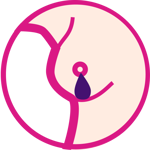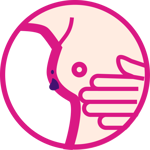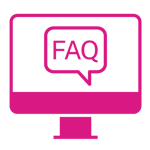
- Home
- >Breast cancer and screening
- >Signs and symptoms of breast cancer
Signs and symptoms of breast cancer
You can have breast cancer without having any signs or symptoms
85% of women diagnosed with breast cancer by BreastScreen NSW had no noticeable symptoms.1476
As well as having your breast screen (also known as a mammogram) every 2 years, it’s also important to be breast aware and check your breasts regularly for any changes.
Every woman’s breasts are different. Breasts differ in size, shape, and colour. Get to know how your own breasts look and feel to understand what’s normal for you, so you can tell if something changes.
Look for...

A change in size or shape of your breast.

A change to the nipple, such as crusting, an ulcer, redness, or an inversion.

Nipple discharge that occurs without squeezing, which could include blood.

A change to the skin of your breast, such as redness or dimpling.
Feel for...

A new lump or lumpiness, especially if its only one breast.

An unusual pain in your breast or armpit that doesn’t go away.
If you have any breast changes or symptoms, see your doctor straight away.
Do not visit BreastScreen NSW.
It’s important to get a health professional to properly check any breast changes or symptoms as soon as possible. They might do a physical breast examination. Or they might request diagnostic tests such as x-rays or an ultrasound image of your breasts.
Make it part of your routine
Being breast aware means it will be easier for you to tell if something changes. Breast awareness means knowing your breasts and being aware of what changes are normal for you. Become familiar with the look and feel of your own breasts.
Understand this important cancer screening test.
Know the facts and risks.
Find out the risks of breast cancer.
Find out if you are eligible to screen with BreastScreen NSW.
What to expect before during and after your breast screen.



